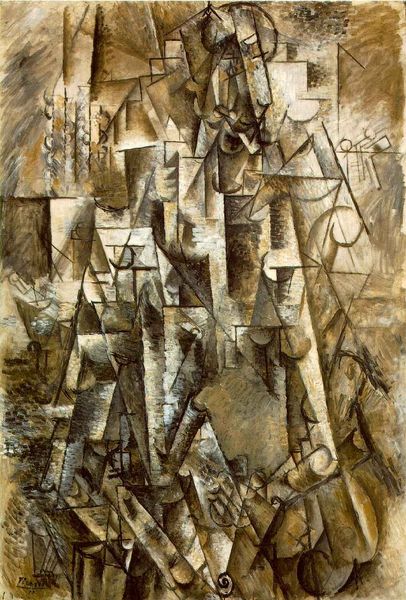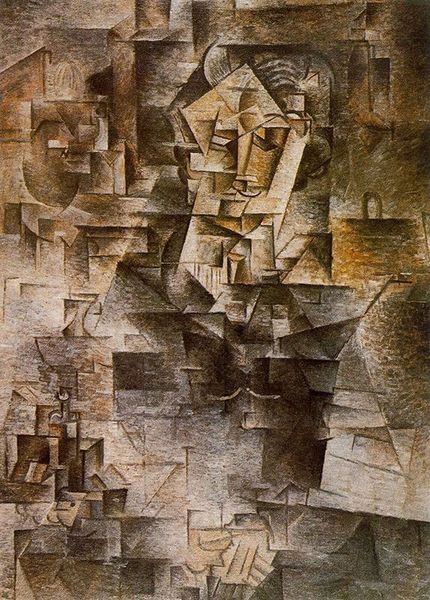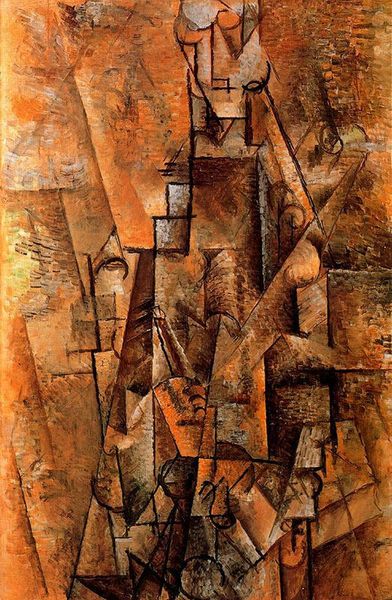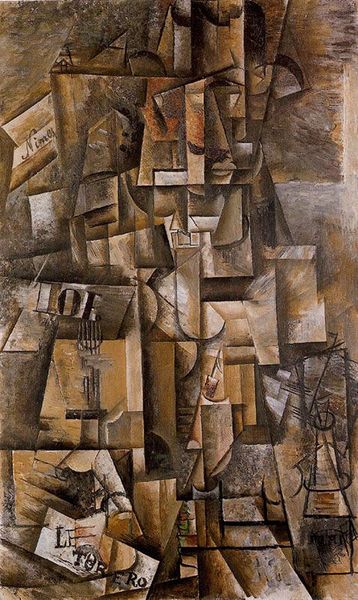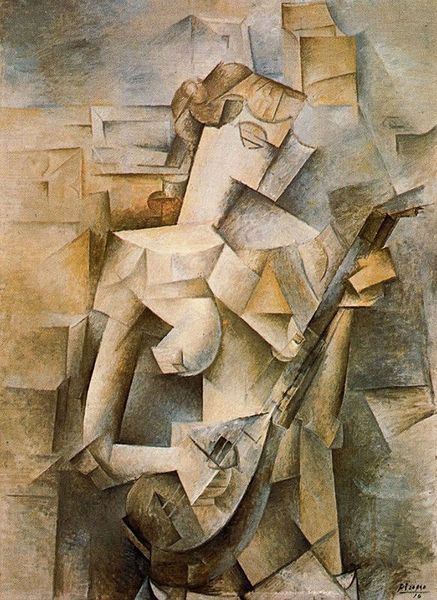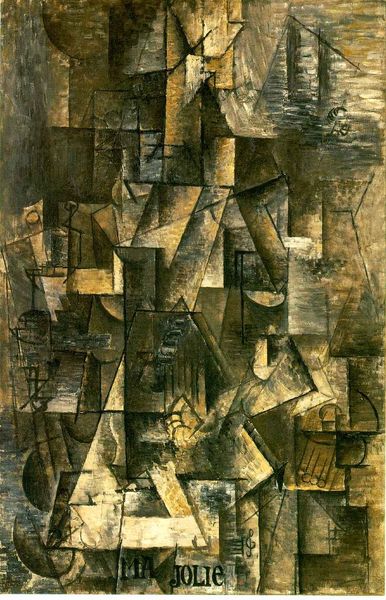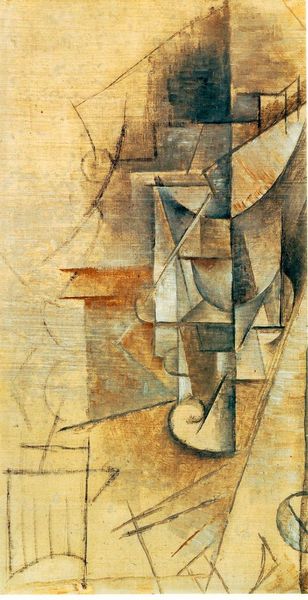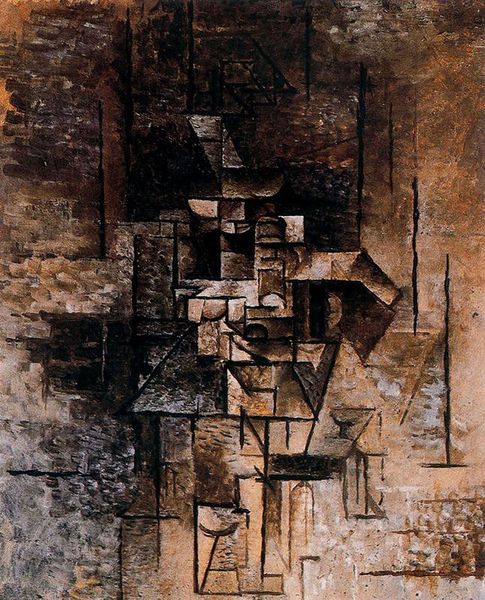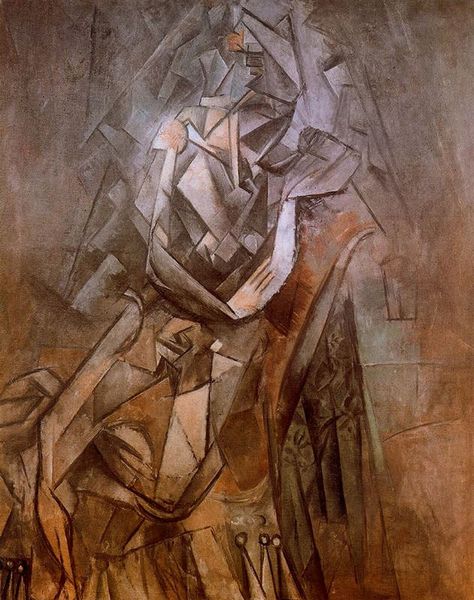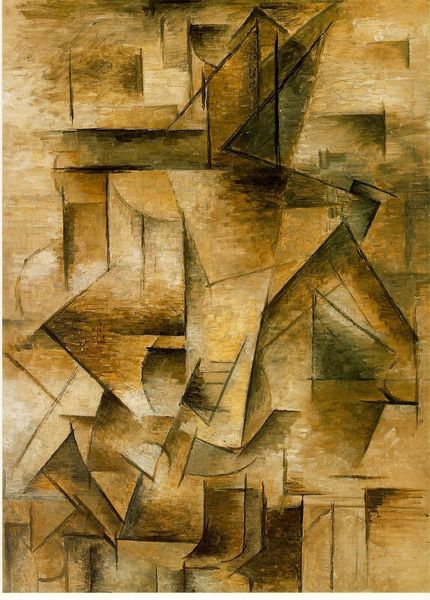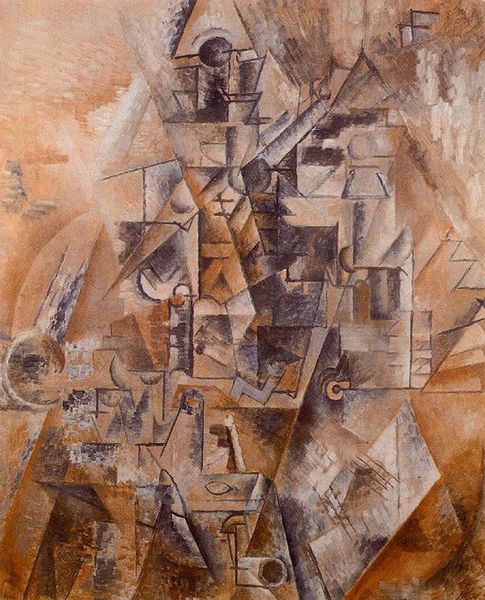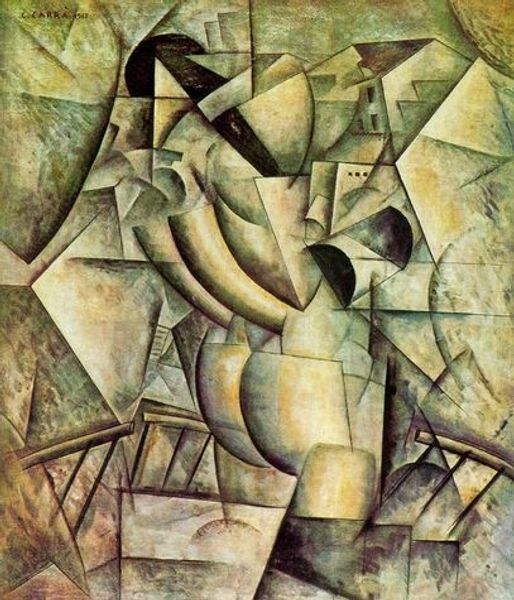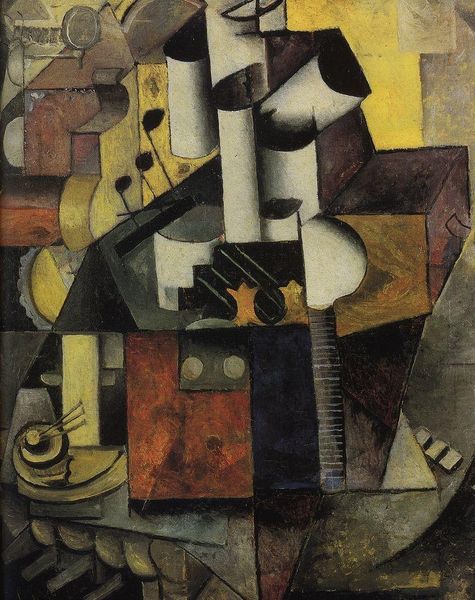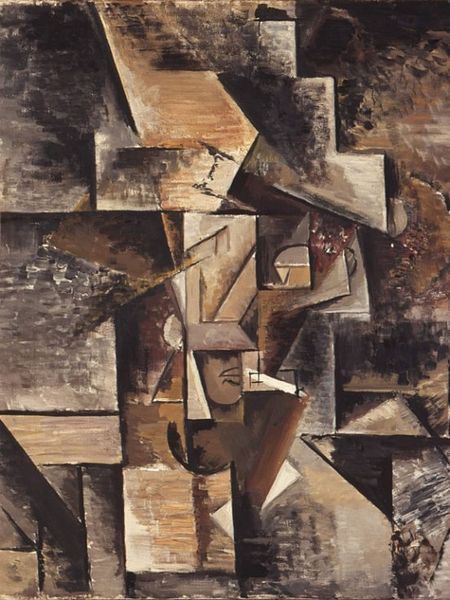
painting, oil-paint
#
portrait
#
cubism
#
abstract painting
#
painting
#
oil-paint
#
figuration
#
oil painting
#
abstraction
#
mixed media
Dimensions: 123.5 x 46 cm
Copyright: Public domain US
Editor: Here we have Picasso's "Man with Guitar," painted in 1912 using oil. I find it quite perplexing at first glance, with its fragmented forms. How do you interpret this work in terms of its historical context and significance? Curator: This piece transcends a simple portrait. Consider Cubism's emergence amidst early 20th-century social upheaval and rapid technological advancements. Picasso dismantles traditional representation, mirroring the fracturing of societal norms. How does the "man" as a subject, typically seen as a figure of authority, become destabilized in this cubist fragmentation? Editor: So it's not just about visual style, but also about questioning power structures? Curator: Precisely. The intersecting planes disrupt a singular, fixed viewpoint, echoing the challenge to objective truths during this period. Think about the rise of photography. Did it change what painting was thought to represent? What does it say about art's role in reflecting shifts in power and identity? And how might this work be read through the lens of post-colonial theory? Editor: I see how the guitar, often associated with Spanish culture, plays into that identity. The geometric shapes could represent how identity itself is constructed and broken down. So it's about deconstructing not only form, but also identity and cultural narrative. Curator: Yes. Now, reflect on how Picasso, as a European artist, engages with these notions. What responsibility, or perhaps problematic assumptions, might be embedded in his deconstruction? Editor: It definitely makes you think about the artist's own position and the larger implications of representation. This has changed the way I understand Cubism—it’s not just about shapes! Curator: Exactly! Art is a powerful tool to deconstruct assumptions, revealing complex dynamics of culture, identity and power. It requires continual critical engagement and reflection on our own positionality.
Comments
No comments
Be the first to comment and join the conversation on the ultimate creative platform.
